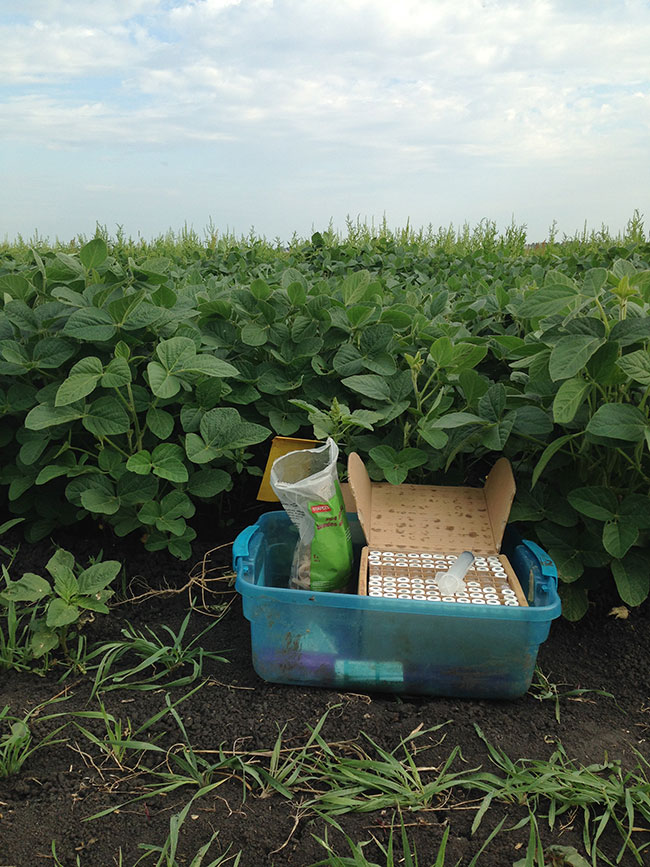
Features
Environment
Editorial: Join the emission conversation
April 20, 2022 By Stefanie Croley
 Measuring N2O emissions from organic and
conventional field plots. Photo courtesy of Megan Westphal.
Measuring N2O emissions from organic and
conventional field plots. Photo courtesy of Megan Westphal. In 2021, and well into 2022, most of us in ag couldn’t get through a conversation without saying the word “drought.” This year, fertilizer seems to be the topic that creeps its way into every exchange. From rising costs to alternative options, crop nutrients are top of mind right now.
When it comes to fertilizer and decision-making, your farm’s bottom line is a priority, of course – but nutrient stewardship should be, too. In December 2020, the federal government announced its Strengthened Climate Plan, which included a number of items that would impact Canada’s ag sector, including a goal of reducing greenhouse gas emissions by 30 per cent below 2020 levels by the year 2030. Throughout 2021, Agriculture and Agri-Food Canada (AAFC) met with stakeholders from commodity and producer groups, provinces and industry organizations to create a discussion paper and consultation and discussion plans. The discussion paper, released in early March, shares background information about fertilizer use in Canadian crop production, direct and indirect fertilizer emissions, economic implications, beneficial management practices and more.
Within the paper is a large portion of information surrounding 4R Nutrient Stewardship – a well-known approach to sustainable fertilizer use, by focusing on applying the right source of fertilizer at the right rate, right time and right place. As the discussion paper states, there’s data to suggest that “widespread adoption of the 4R in Western Canada could reduce emissions by two to three megatonnes – or 50 to 75 per cent of the Government’s emission reduction target.” But while the idea is well known, there’s much room for improvement: Fertilizer Canada’s 2019 Fertilizer Use Survey found less than 10 per cent of farmers have a formal 4R plan in place, and there were major barriers to implementing the 4R concept – particularly a lack of accessible data regarding fertilizer use and sales.
The discussion paper is long and complex. It alludes to opportunities to reduce emissions, such as enhanced efficiency fertilizers, split applications and other conservation practices. But much like farming, there’s no one-size-fits-all solution. Going forward, AAFC has launched additional consultations to help develop an approach to achieve this goal and is now asking farmers, producers, processors and other stakeholders in the ag sector to share ideas, challenges and experiences. Your input will help guide a plan to move forward and meet the emission reduction goal – but most importantly, it’s an opportunity for your voice and your unique experiences to be heard. There’s no silver bullet (there’s another one of those phrases that we can’t escape!), but it’s important to share what opportunities and barriers you face so a well-informed and thorough approach can be found.
We’ve linked the AAFC Discussion Document and survey on our website at topcropmanager.com/aafc-discussion-document. Share your comments by June 3, 2022, and ensure your voice is heard.